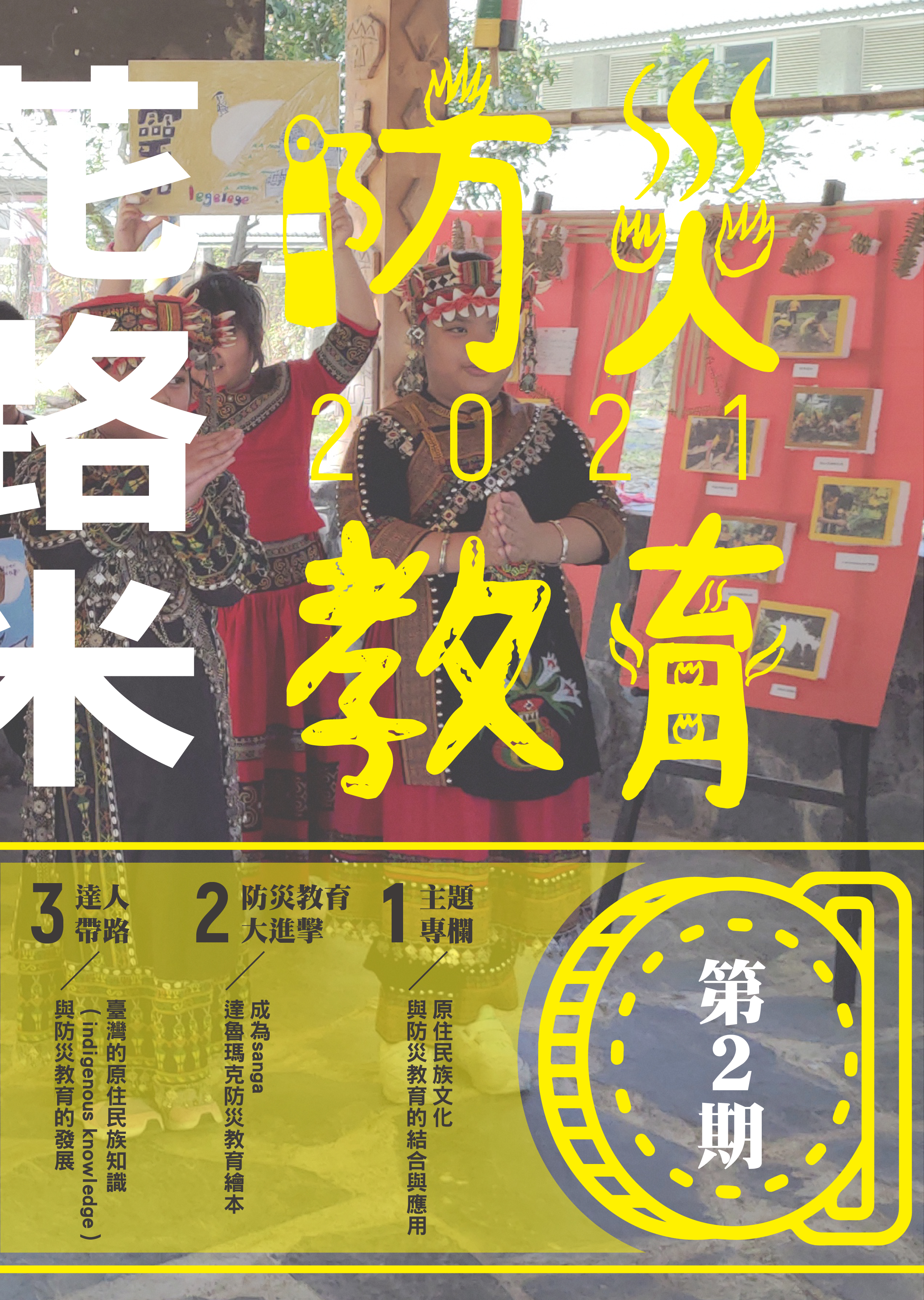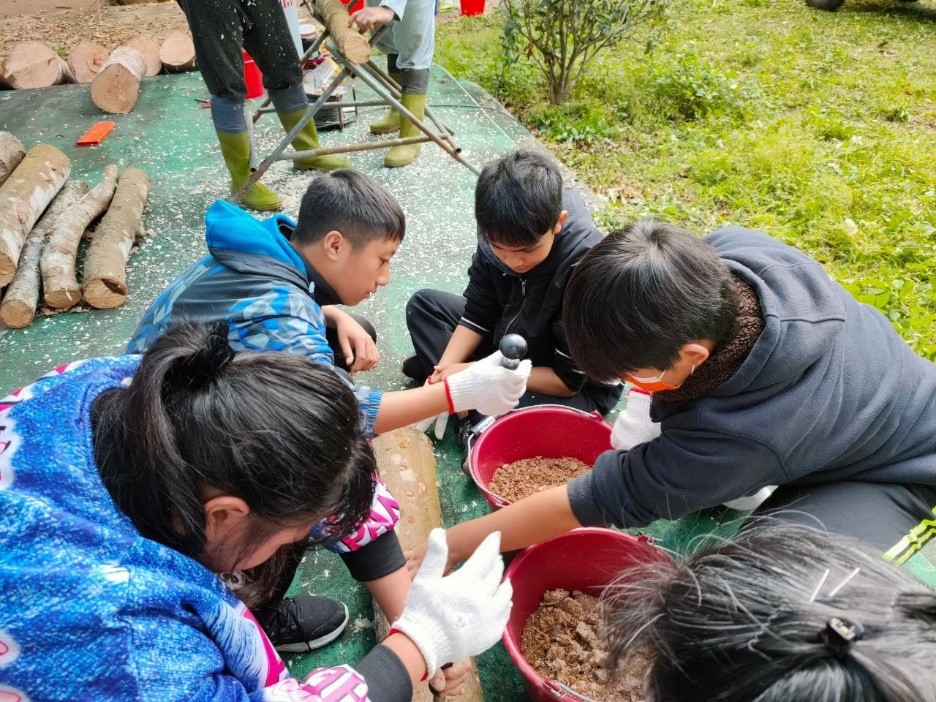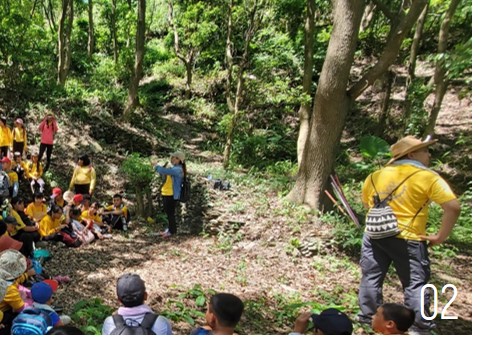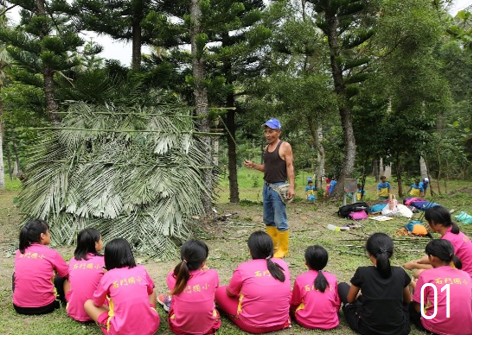The combination and application of indigenous culture and disaster risk reduction education
28.05.2021

-
Date
-
28.05.2021 ~ 28.05.2021
-
Venue
- MOE
-
Tag
- #Activity
Introduction
Taiwan’s indigenous people’s survival beliefs emphasize adaptation to environmental changes rather than focusing on "disasters". From tribal living throughout the years, their ancestors picked up plenty of survival skills and self-protection abilities from being in the wilderness. Of which, abilities such as environment exploration, danger avoidance, and harm prevention are closely connected to the disaster management concepts of disaster mitigation (myths and legends, taboos), preparedness (traditional systems, habits), response (hunter wisdom), and recovery (songs, beliefs, migration), etc. With the advancement of technology and the convenience of living functions, traditional tribal culture has gradually been replaced by modern living modes. Many survival skills that originated from the past are in danger of being forgotten or lost.
In view of the importance of preserving indigenous tribal culture as well as its close connection to contemporary disaster prevention, in 2021 the Ministry of Education started to integrate tribal culture into disaster risk reduction education (DRRE) training in schools with a special indigenous focus. The expectation is that both teachers and students can inherit tribal culture through connecting with environmental awareness from the perspective of historical comprehension and cultural recognition. During recent years, driven by ethnic education, more schools with a special indigenous focus in Taiwan are committed to the effort of resuming tribal culture and skills, and adding them into the design of unique significant courses and course activities. The following are some remarkable examples from these disaster resistant school.
The core value of history and culture
Core values excavated from traditional tribal history and local culture and symbolic objects of tribal culture are selected by the schools and applied into the core design of DRRE. Under the conviction of "environmental sustainability and safety continuation," Xinyi Elementary School, Chenggong Township, Taitung County built its course design based on the moral of “an old persimmon starts a new episode in disaster risk reduction education.” Combined with Amis culture, the school developed a series of courses such as "Ecology Awareness, Traditional Crafts, Resource Reuse, and Forest & Mountain Prospect" to emphasize that DRRE is not merely a slogan, but an applicable life attitude. By experiencing environmental changes resulting from past disasters, one should be able to pass on life wisdom as well identify with one’s own local culture.
Shimen Elementary School, Mudan Township, Pingtung County applied the early image of the "Shimen Snail" in a spiritual role to tribal cultural accession. The Nampaiwan Shimen tribe is a Kapanan tribe next to a colossal river. With their poor-living conditions, snails were a prime source of protein for the tribal people. Women collected the snails to supplement their household needs, a common memory in the tribal village. The design of the "Paiwan Disaster Risk Reduction Education Academy" emerged from the idea of "life origins, riverside livelihood, mountain and river fondness, canal dream," hoping to start from the local tribe itself an exploration of the world through the antennae of a snail while keeping a forward-moving spirit and attitude.
Beiye Elementary School, Majia Township, Pingtung County designed its disaster prevention courses based on the idea of "Vuvu's disaster risk reduction wisdom on the hill." Through the wisdom of "Vuvu" (Paiwan’s appellation for their grandparents and grandchildren), they teach their children to understand their tribal environment, as well as about landslides, so that the children can acquire traditional mountain/forest ecological knowledge. Such knowledge is integrated with contemporary knowledge and skills in order to implement DRRE. The purpose is to detect the origins of the disasters in small places, developing the most appropriate responses to coexist with nature and cope with any disaster.
Songpu Elementary School, Yuli Township, Hualien County is located in the Amis tribal village. The elders expect that every child can embrace seven competencies as follows: “the cultivation of caring for others, good communication, courage development, diligence, praise, fraternity, and wisdom accumulation" to be able to become a “whole person.” It is hoped that children can capture the Amis folk cultural relics and techniques, and incorporate them into daily life in order to continue the tribal culture, which is also tied up with the promotion of sustainable development goals (SDGs).
Application of traditional wisdom and skills
How the tribe survived in an alternating mountain and forest environment in the past was fully dependent on the life wisdom and survival skills of their ancestors. Beiye Elementary School believes that “vuvu” plays an indispensable role to transfer the skills from the past into the future. Through the telling of migration-disaster tribal stories, tribal elders led students to step into the mountains and forests and recognize the ecological environment so as to acquire traditional DRRE knowledge and build basic DRRE capabilities. Survival skills such as edible and inedible plants recognition, participation in planting a number of traditional species herbage, harvesting and baking food, all serve to gradually let students understand the production and cooking preparation for local foods, aiming to establish a friendly and cooperative livelihood to reinforce the whole support system.
Shimen Elementary School is convinced that in the process of ‘school learning’, it must also go through a process of understanding "mountain application" as well, thereby learning from the forest and extracting the conventional wisdom to develop the ability of problem-solving. Children in lower grades begin their lessons by recognizing the campus Evacuation Map, learning the usage of terrain and features as significant markers, and making traditional tools to obtain water and for fishing. Middle-grade students have to learn the purpose and application of executing smoke signals, wild edible plant identification, and also practically erect picnic stoves for the purpose of cooking. Meanwhile, senior students have to learn the know-how of hunters, terrain observation, trap placement and judgement, material collection for building temporary shelters, and creating disaster prevention songs, from original ancient songs to ease injured souls.
Under the consensus of preserving and maintaining the forest and its environment, the tribal residents teamed up with the Forestry Bureau, Council of Agriculture, Executive Yuan to lead Penglai Elementary School, Nanzhuang Township, Miaoli County students to participate in Under-Forest economic courses. They used waste wood to grow mushrooms (fungus), and cooked them to derive the value of the idea “take from nature and give back to nature.” In addition, the tribal elders led students to step into the wilderness, utilize traditional knowledge to build disaster risk-awareness, learn about fire-making in the wilderness, vegetable detection and the manufacture of personal-evacuation kits. The purpose is to fully integrate evacuation and survival skills in the wilderness.
The identification of local disaster risk reduction education
Indigenous conventional wisdoms emphasize respect for the heavens and the earth, and attach importance to environmental sustainability. They are consistent with the spirit of the coexistence of the environment and disasters, especially in DRRE, conjuring up the spirit of ecologically sustainable development. Through the process of disaster resistant school settled in schools with a special indigenous focus, they have learned how to combine DRRE with localized culture, historical knowledge and legends, and design localized disaster prevention courses. In addition to responding to the spirit of integrating the 12-year Basic Education issues, this can deepen the community and school students’ sense of identity with the local society, and furthermore love this land, and truly implement localized DRRE.






